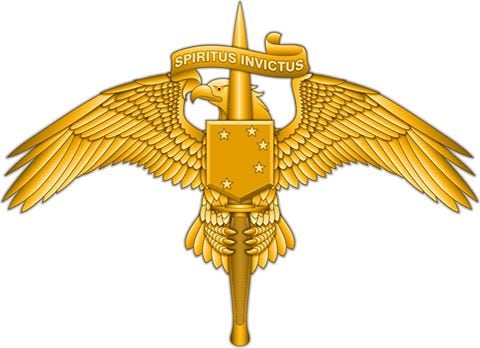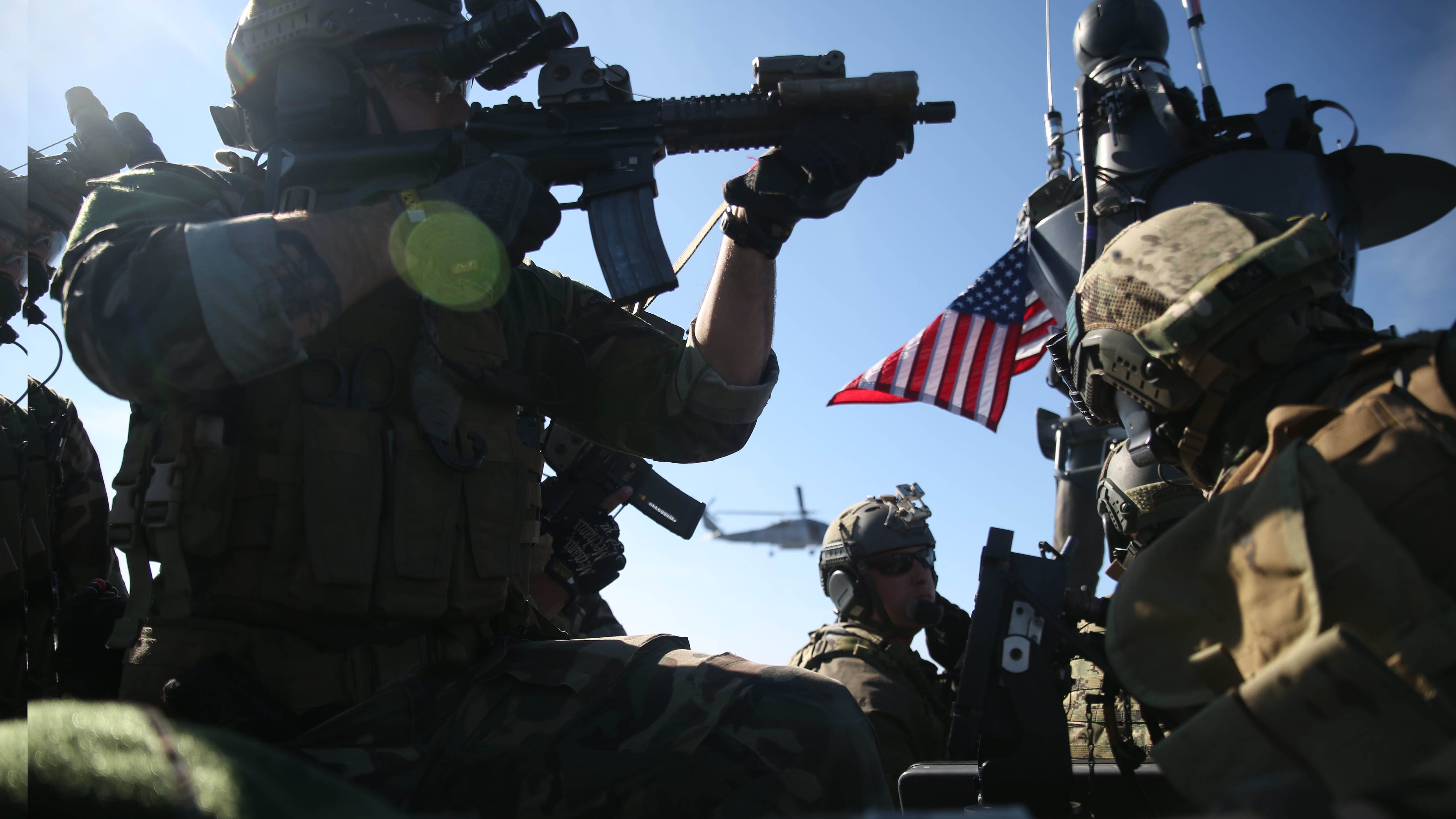The idea of giving Marine special operators an insignia to symbolize their special skillsets had been percolating for years, but in 2014 the right people were finally in the right place to make it a reality.
"This is about the young Marines and recognizing the qualifications that they have earned," said Master Gunnery Sgt. Otto Hecht.
Hecht became the occupational field manager and specialist for critical skills operators in 2014. He and Master Sgt. Mike Mulvihill, an occupational field specialist, proposed the idea for the badge that year, Hecht said.

Starting on Sept. 28, Marine Raiders will be wearing a new insignia to signify the special set of skills they must master.
Photo Credit: Marine Corps
First, the two had to prove that Marine special operators, known as Raiders, met the criteria for an insignia, Hecht said. That was not an easy task because many other badges are derived from the other services while this insignia would be unique to the Marine Corps.
The Marine Corps Uniform Board ultimately decided that to be eligible for such a badge, Marines had to go through long and arduous training and be in a high-risk duty above and beyond that of a normal Marine, Hecht said.
Needless to say, Raiders qualified.
In January 2015, the pair brought the concept for the badge to then-Maj. Gen. Joseph Osterman, who was serving as head of Marine Corps Forces Special Operations Command at the time. He liked the idea, but told them "come back to me with more meat" on the plan, Hecht said.
Over the next six months, the two asked for design ideas from Raiders and received more than 40 proposed designs, many of which included the basics of what became the final design: an eagle, the Southern Cross and a dagger, they said.
One of the initial proposed designs included a skull as a tribute to badges that the original Marine Raiders are believed to have worn during World War II, but the idea didn't make it through the approval process, in part because the skull has not been part of the official Raider uniform since MARSOC was established in 2006, officials said.
While putting together a rough draft of the final submission, "suddenly it just popped," Hecht said. The design was tweaked a bit further after Commandant Gen. Robert Neller said he thought the shield should be bigger and the Institute of Heraldry ruled that an eagle's head must always face the left, not right, he said.
Sergeant Major of the Marine Corps Ronald Green, a member of the uniform board, helped accelerate the approval process as the 10th anniversary of MARSOC's activation drew near, Hecht said.
On Aug. 17, Neller approved the badge, which Mulvihill called a "symbol of Marine Corps excellence in special operations."
Getting the final approval took more than both men's efforts, Hecht said. MARSOC needed time to become firmly established as a part of the special operations community, he said.
"We've matured as an organization to the point where we feel comfortable recognizing Marines," he said.





